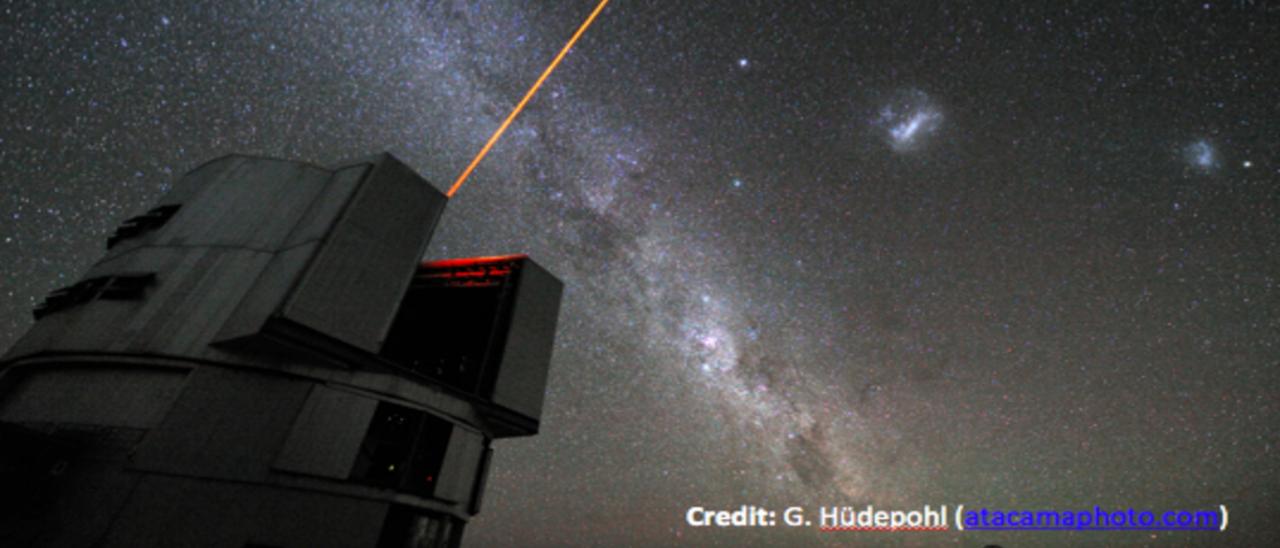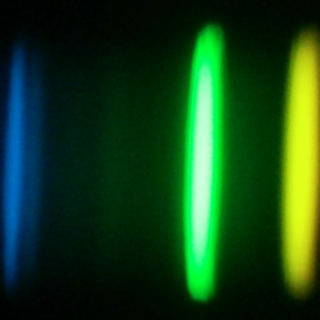General
Galaxy formation and evolution is a fundamental Astrophysical problem. Its study requires “travelling back in time”, for which there are two complementary approaches. One is to analyse galaxy properties as a function of red-shift. Our team focuses on the other approach, called “Galactic Archaeology”. It is based on the determination of galaxy properties from the study of their resolved stars. Depending on their mass, stars can live as long as a Hubble time, thus allowing to study in exquisite detail how galaxies have evolved from the early Universe to the present time. This research is one of the main drivers of major international projects, both observational (such as the on-going Gaia mission and SDSS surveys, and the planned WHT/WEAVE, LSST, VISTA/4MOST, DESI, E-ELT/HARMONI, to name a few), and theoretical (such as Nihao, Magic and Auriga hydrodynamical cosmological simulations), in most of which members of our team are involved. This ensures that Galactic Archaelogy will be at the forefront of astronomical research for a long time.
The objective of this project is to understand the formation and evolution of galaxies of different morphological types, using the many local examples that can be resolved into individual stars, and which, therefore can be studied in a detail impossible elsewhere. In particular, the Local Group and its immediate surroundings contain about 80 galaxies of different morphological types. Among these, the largest are spiral galaxies (the Milky Way, M31 and M33), a dozen of them are (dwarf) irregulars and the rest are early-type systems. Thus, we can study galaxies of different morphological types, from the Milky Way down to the smallest galactic scales, which are those challenging our understanding of what a "galaxy" is.
We aim to derive their evolutionary history using a set of complementary techniques: I) using deep photometry reaching the old main sequence turn-offs, it is possible to derive the full star formation history over the entire galaxy's life; ii) spectroscopic studies of individual stars add direct information on the kinematics and chemical abundances of the different stellar populations; iii) for the most nearby systems, the inclusion of accurate astrometric measurements yields information on the distance (and thus absolute brightness), the orbital motion of the system and can even deliver the full 6D phase-space information of sub-samples of stars; iv) the study of variable stars such as Cepheids and RR Lyrae provide independent constraints on metallicities and ages of the populations they belong to. These observations offer invaluable, rich information, that can be interpreted using hydrodynamic cosmological simulations of galaxy formation that model a wide range of important physical processes.
Members
Results
Below a list of highlights from the group activities in 2020-2021. For a more general overview see publication list and this webpage.
1. Using HST data of the ultra-faint dwarf (UFD) Eridanus II, we determined (Gallart+2021) that its only star formatio event, occurred 13 Gyr ago, was very short (100-500Myr). The associated SNe energy could be enough to expel the remaining gas, casting doubts on the need to invoke cosmic reionization as the preferred explanation for the early quenching of UFD galaxies.
2. The various star formation episodes, extended to few hundred million years ago, which we have precisely dated in the dwarf spheroidal galaxies Fornax (Rusakov+2021) and Leo I (Ruiz-Lara+2021), have shed light on the effects of interactions and mergers in the star formation history of dwarf galaxies.
3. By performing for the first time a joint dynamical modeling of the internal stellar and HI gas kinematics of a Local Group dwarf galaxy, WLM, we were able to determine that its dark matter halo is likely both cored and has a prolate shape, where the co-existence of these features might pose a problem for self-interacting dark matter models (Leung+2021).
4. For the first time using cosmological simulations, we demonstrated that mergers are a viable explanation for the presence of prolate rotation in the stellar component of galaxies also on the scale of dwarf galaxies (Cardona-Barrero+2021)
5. Robert Grand ran the highest resolution MHD cosmological Milky Way simulation in the world (Grand+2021), run on MPCDF Raven large compute system for which the PI had rolling access as an MPA fellow.
Scientific activity
Related publications
-
The ACS LCID Project. IX. Imprints of the Early Universe in the Radial Variation of the Star Formation History of Dwarf GalaxiesBased on Hubble Space Telescope observations from the Local Cosmology from Isolated Dwarfs project, we present the star formation histories, as a function of galactocentric radius, of four isolated Local Group dwarf galaxies: two dSph galaxies, Cetus and Tucana, and two transition galaxies (dTrs), LGS-3 and Phoenix. The oldest stellar populationsHidalgo, S. L. et al.
Advertised on:
122013 -
The Carina Project. VI. The Helium-burning Variable StarsWe present new optical (BVI) time-series data for the evolved variable stars in the Carina dwarf spheroidal galaxy. The quality of the data and the observing strategy allowed us to identify 14 new variable stars. Eight out of the 14 are RR Lyrae (RRL) stars, 4 are Anomalous Cepheids (ACs), and 2 are geometrical variables. Comparison of the periodCoppola, G. et al.
Advertised on:
92013 -
The near-infrared Ca II triplet as a metallicity indicator - II. Extension to extremely metal-poor metallicity regimesWe extend our previous calibration of the infrared Ca II triplet (CaT) as a metallicity indicator to the metal-poor regime by including observations of 55 field stars with [Fe/H] down to -4.0 dex. While we previously solved the saturation at high metallicity using a combination of a Lorentzian and a Gaussian to reproduce the line profiles, in thisCarrera, R. et al.
Advertised on:
92013 -
Spatial dependence of the star formation history in the central regions of the Fornax dwarf spheroidal galaxyWe present the star formation history (SFH) and the age-metallicity relation (AMR) in three fields of the Fornax dwarf spheroidal galaxy. They sample a region spanning from the centre of the galaxy to beyond one core radius, which allows studying galactocentric gradients. In all the cases, we found stars as old as 12 Gyr, together with intermediatedel Pino, A. et al.
Advertised on:
82013 -
3D kinematics through the X-shaped Milky Way bulgeContext. It has recently been discovered that the Galactic bulge is X-shaped, with the two southern arms of the X both crossing the lines of sight at l = 0 and | b| > 4, hence producing a double red clump in the bulge color magnitude diagram. Dynamical models predict the formation of X-shaped bulges as extreme cases of boxy-peanut bulges. HoweverVásquez, S. et al.
Advertised on:
72013 -
The ACS LCID Project - VIII. The short-period Cepheids of Leo AWe present the results of a new search for variable stars in the Local Group dwarf galaxy Leo A, based on deep photometry from the Advanced Camera for Surveys onboard the Hubble Space Telescope. We detected 166 bona fide variables in our field, of which about 60 per cent are new discoveries and 33 candidate variables. Of the confirmed variables, weBernard, Edouard J. et al.
Advertised on:
72013 -
The MAGellanic Inter-Cloud Project (MAGIC). I. Evidence for Intermediate-age Stellar Populations in between the Magellanic CloudsThe origin of the gas in between the Magellanic Clouds (MCs)—known as the "Magellanic Bridge" (MB)—is puzzling. Numerical simulations suggest that the MB formed from tidally stripped gas and stars in a recent interaction between the MCs. However, the apparent lack of stripped intermediate- or old-age stars associated with the MB is at odds withNoël, N. E. D. et al.
Advertised on:
52013 -
The SUMO project I. A survey of multiple populations in globular clustersWe present a general overview and the first results of the SUMO project (a SUrvey of Multiple pOpulations in Globular Clusters). The objective of this survey is the study of multiple stellar populations in the largest sample of globular clusters homogeneously analysed to date. To this aim we obtained high signal-to-noise (S/N > 50) photometry forMonelli, M. et al.
Advertised on:
52013 -
Distance and reddening of the Local Group dwarf irregular galaxy NGC 6822On the basis of a new photometric analysis of the Local Group dwarf irregular galaxy NCG 6822 based on observations obtained with the Advanced Camera for Surveys onboard the Hubble Space Telescope, we have obtained a new estimate of the extinction of two fields located in the southeast region of the galaxy. Because of significant differences in thePietrinferni, A. et al.
Advertised on:
122012 -
On the Central Helium-burning Variable Stars of the LeoI Dwarf Spheroidal GalaxyWe present a study of short-period, central helium-burning variable stars in the Local Group dwarf spheroidal galaxy LeoI, including 106 RR Lyrae stars and 51 Cepheids. So far, this is the largest sample of Cepheids and the largest Cepheids to RR Lyrae ratio found in such a kind of galaxy. Comparison with other Local Group dwarf spheroidals, CarinaFiorentino, G. et al.
Advertised on:
112012 -
The star formation history and dust content in the far outer disc of M31We present a detailed analysis of two fields located 26 kpc (˜5 radial scalelengths) from the centre of M31 along the south-west semimajor axis of the disc. One field samples the major axis populations - the Outer Disc field - while the other is offset by ˜18 arcmin and samples the warp in the stellar disc - the warp field. The colour-magnitudeBernard, Edouard J. et al.
Advertised on:
32012 -
Anomalous Cepheids in the Large Magellanic Cloud. Insight into their origin and connection with the star formation historyContext. The properties of variable stars can give independent constraints on the star formation history of the host galaxy, by determining the age and metallicity of the parent population. Aims: We investigate the pulsation properties of 84 Anomalous Cepheids (ACs) detected by the OGLE-III survey in the Large Magellanic Cloud (LMC), in order toFiorentino, G. et al.
Advertised on:
42012 -
Variable stars in the Cetus dwarf spheroidal galaxy: population gradients and connections with the star formation historyWe investigate the variable star content of the isolated, Local Group, dwarf spheroidal (dSph) galaxy Cetus. Multi-epoch, wide-field images collected with the Very Large Telescope/Visible Multiobject Spectrograph camera allowed us to detect 638 variable stars (630 RR Lyrae stars and eight anomalous Cepheids), 475 of which are new detections. WeMonelli, M. et al.
Advertised on:
52012 -
The ACS LCID Project. VII. The Blue Stragglers Population in the Isolated dSph Galaxies Cetus and TucanaWe present the first investigation of the Blue Straggler star (BSS) population in two isolated dwarf spheroidal galaxies of the Local Group, Cetus and Tucana. Deep Hubble Space Telescope/Advanced Camera for Surveys photometry allowed us to identify samples of 940 and 1214 candidates, respectively. The analysis of the star formation histories of theMonelli, M. et al.
Advertised on:
12012 -
Radial velocities and metallicities from infrared Ca II triplet spectroscopy of open clusters . Berkeley 26, Berkeley 70, NGC 1798, and NGC 2266Context. Open clusters are ideal test particles for studying the formation and evolution of the Galactic disk. However, the number of clusters with information about their radial velocities and chemical compositions remains largely insufficient. Aims: We attempt to increase the number of open clusters with determinations of radial velocities andCarrera, R. J.
Advertised on:
82012



